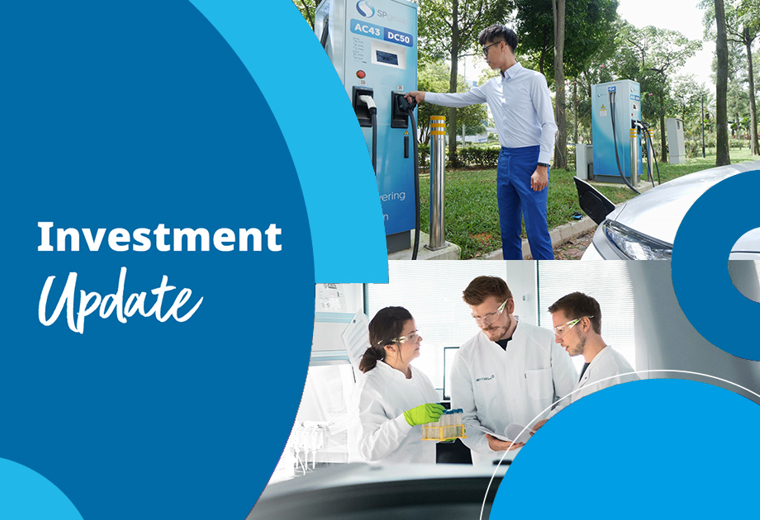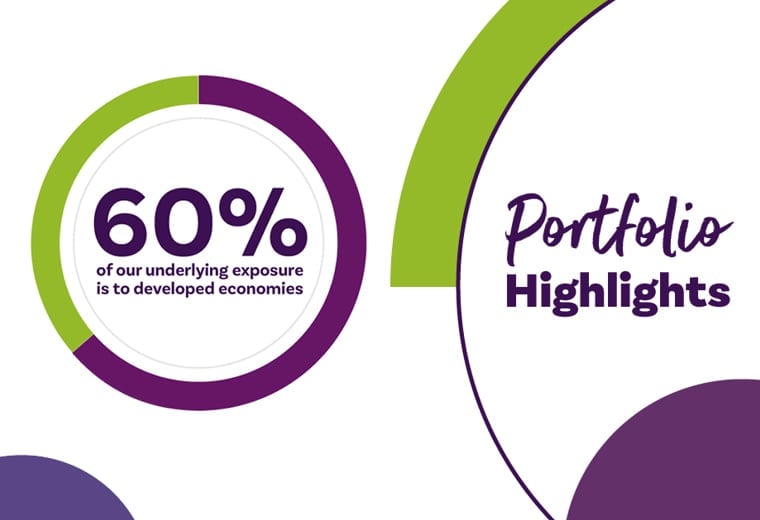How We Invest
We work to deliver sustainable value over the long term as an active investor and an engaged owner.
Our investment philosophy has been guided by four long term investment themes that encompass Transforming Economies; Growing Middle Income Populations; Deepening Comparative Advantages; and Emerging Champions.
In applying these themes, we look at investments through the lens of key structural trends, to shape our long term portfolio construction and guide our investment activities. Over the year, we refreshed our thinking and sharpened our investment focus for the coming years, along four structural trends:





Digitisation and Sustainable Living will have a pervasive impact across many sectors. Future of Consumption and Longer Lifespans reflect structural shifts in consumption patterns and growing needs of longevity.
We expect to increasingly shape our portfolio in line with such trends. This includes deeper engagements with our portfolio companies to identify threats and relevant transformation opportunities. We also invest in companies that are developing innovative solutions to disrupt current business models or create new ones.
We invest in companies that are developing innovative solutions to disrupt current business models or create new ones.
We aim to build a forward looking and resilient portfolio that can deliver sustainable and equitable economic growth, and enable the transition to a low carbon economy. We deploy capital to catalyse innovations and solutions to benefit this and future generations.
We invest in companies that are developing innovative solutions to disrupt current business models or create new ones.
Our Environmental, Social and Governance (ESG) framework helps us identify sustainability-related risks and opportunities in the investments we make and the portfolio we own. It also supports our ambition to halve the net carbon emissions of our portfolio over 2010 levels by 2030, and to achieve net zero carbon emissions by 2050.
The transitions to low carbon and digital economies will bring about fundamental changes to businesses and jobs, and give rise to new challenges, such as data privacy. We work to enable fair and just transitions that care for the interests of employees and partners along the supply and value chain.
Decent jobs, diverse and inclusive workplaces are foundational to resilient communities. We encourage portfolio companies in their efforts to upskill and reskill their workforce.
Robust corporate governance includes the purpose of a company and the values of its people, the role and makeup of boards of directors, the rights of shareholders and the interest of stakeholders, and the balance between short term and long term performance measurement. These are essential underpinnings of a forward looking and resilient institution.
Our investment discipline focuses on intrinsic value and our risk-return framework. This risk-return framework drives our investment focus, capital allocation, performance measurement and incentive system.
Our investment discipline focuses on intrinsic value and our risk-return framework.
For each investment we make, we conduct bottom-up intrinsic value tests, with expected returns evaluated against a risk-adjusted cost of capital. This risk-adjusted cost of capital is derived using a capital asset pricing model. Investments in riskier sectors or markets have higher costs of capital. We use risk-adjusted cost of capital to normalise the risks in order to compare the relative attractiveness among investment opportunities.
We also include a current internal carbon price of US$42 per tonne of carbon dioxide equivalent (tCO2e ), to assess the possible climate transition impact and to further guide our investment decisions.
From 1 April 2021, we have started adding an illiquidity risk premium to our cost of capital for unlisted investments, and a venture risk premium to our cost of capital for early stage investments.
Our investment discipline focuses on intrinsic value and our risk-return framework.
We include a current internal carbon price of US$42 per tCO2e to assess the possible climate transition impact and to further guide our investment decisions.
We have full flexibility as an owner and investor to reshape and rebalance our portfolio, whenever opportunities or challenges arise. We are predominantly invested in equities. Based on our risk-return appetite, we invest or divest in line with our outlook and value tests. We may take concentrated positions or remain in cash, and do not set limits for asset classes, countries or sectors. We manage our liquidity and balance sheet for resilience.
We are an active shareholder, seeking to add or create value in our portfolio across all stages of enterprise growth, from early stage to mature companies. We proactively promote good governance, looking to boards to drive strategy and oversee management, who, in turn, run their respective companies.
The Portfolio Development function, which was established last year, works together with our major portfolio companies to enhance value through partnerships, innovation, growth strategies and transformational possibilities.
Our portfolio comprises both listed and unlisted assets, including investments in funds. Mature, Singapore-based companies such as Mapletree, PSA and SP Group make up just over a third of our unlisted portfolio. Investments in private equity and credit funds have been instrumental in helping us gain deeper insights into new markets or sub-sectors of specialisation, and have provided co-investment opportunities. They make up just over a quarter of our unlisted portfolio. Other private companies such as Ant Financial, Ceva Santé Animale, Global Healthcare Exchange, GoTo Group, Haldor Topsoe, Schneider Electric India Private Limited, Verily Life Sciences, Watsons and WuXi AppTec, also make up about a quarter of our unlisted portfolio.
We have made selective investments in early stage companies which provide us with insights into innovation in technology and business models. This enables us to better assess future opportunities and segments, and understand potential implications for our broader portfolio, while potentially delivering attractive risk-adjusted returns. Early stage investments make up less than 10% of our unlisted portfolio today.
Our unlisted portfolio is a source of steady dividends and distributions. Over the last 10 years, our unlisted portfolio has generated returns of over 10% per annum.
From time to time, we may express our interest to invest or divest selected positions or manage our portfolio through derivatives. We may also use derivatives to hedge currency and/or protect against potential losses of our underlying investments, where gains and losses of the derivatives are matched against corresponding losses and gains in the underlying investments.
We manage our liquidity and balance sheet for resilience.



